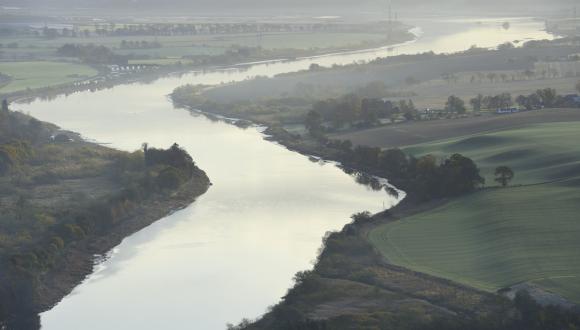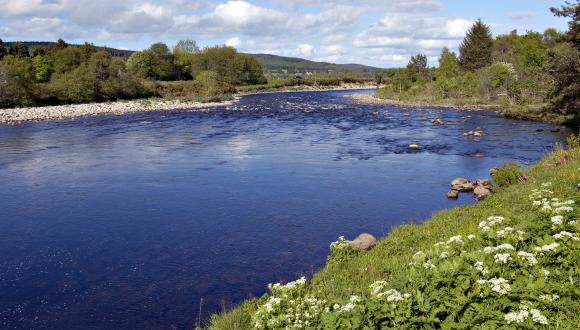
How rivers and burns work
The volume and speed of the water flowing down our rivers controls what rocks, stones and silt they can transport.
A river’s ‘work’ is to transport sediment and water. Moving water can only transport sediment if it has enough force to overcome the strength of the sediment.
Moderate river flows can carry smaller, lighter grains of clay and silt in suspension. Stronger river flows are usually needed to move larger sediments such as coarse sands, gravels, cobbles and boulders.
To achieve this force, the river must be suitably deep and fast flowing, which may only occur a couple of times a year during floods. The flowing floodwaters will bounce and roll the larger sediments along the riverbed.
Most Scottish rivers are dynamic, which can sometimes cause serious hazards.
Dynamic rivers respond to:
- local climate
- weather events – e.g. heavy rainfall
- landscape
- land use
Erosion vs deposition
Different parts of the channel experience different levels of:
- erosion – i.e. removal and transport of sediment
- deposition – i.e. dropping of transported sediment
Erosion is the main process in the steep and deep parts of a river such as the outside of river bends and deep scoured pools. Sediment is deposited in shallower water and where a river channel widens.
Depositional landforms include:
- gravel and sand bars
- riffles – shallows that cross the channel diagonally between pools
During floods, rivers can drop fine sands, clays and silts across inundated floodplains.
All such river work helps to form a river’s character. Find out about Scotland’s main river types.





